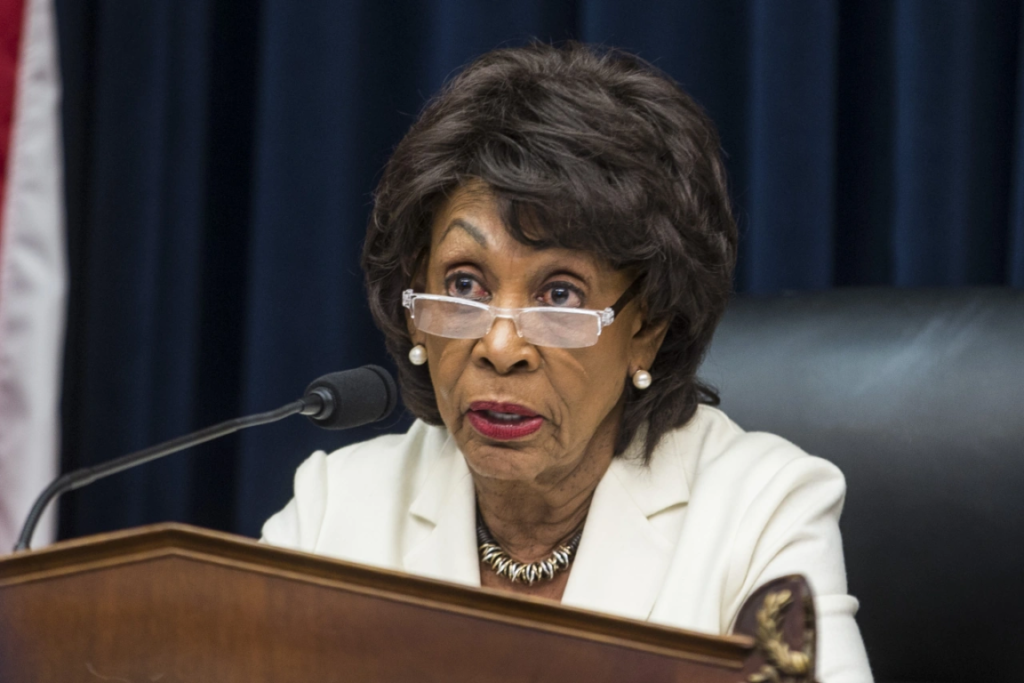On May 1, 2025, senior Democratic Senator Elizabeth Warren, along with five colleagues, sent a joint letter to Treasury Secretary Janet Yellen, sternly pointing out that the Trump administration's plan to include crypto assets in national strategic reserves "could pose a systemic threat to the stability of the US financial system".
This 12-page letter not only listed risks such as cryptocurrency price volatility and regulatory arbitrage but also publicly questioned the Trump family's interest transfer with the crypto industry for the first time - World Liberty Financial (WLFI), a crypto enterprise controlled by the Trump family, recently exposed a $2 billion investment agreement with Abu Dhabi government-supported venture capital MGX, with Trump family members holding a staggering 42% stake according to WLFI's disclosed shareholder list.
This is not the first time the Democratic Party has targeted Trump's crypto policy. As early as April 29, House Financial Services Committee's top Democratic member Maxine Waters successfully blocked a joint hearing on the Republican-led "Crypto Market Structure Act" on grounds of "conflict of interest". In her letter to the committee chairman Hill, she directly stated: "When the Trump family gains hundreds of millions of dollars from issuing meme coins (TRUMP) and investing in DeFi projects, any attempt to relax regulation will become a money laundering tool."

Two Parties' Crypto Policy 'Gene Confrontation'
Democratic Party: From 'Financial Safety' to 'Political Settlement'
As a "crypto hawk" within the Democratic Party, Elizabeth Warren's stance can be traced back to 2017. At that time, the "Cryptocurrency Bill" she led aimed to bring 90% of crypto assets under securities regulation, requiring exchanges to register with the SEC and disclose user information. This proposition was further upgraded in the 2025 joint letter, proposing to limit crypto currency reserves to 0.5% of federal assets and mandatorily require reserve assets to be held in compliant stablecoins like USDC.
House Financial Services Committee Democratic leader Stephanie Murphy focused on the "national security" issue. In the congressional hearing on April 30, she presented FBI investigation data: money laundering transactions via cryptocurrencies increased by 370% year-on-year in 2024, with 62% involving Russian oligarchs and Middle Eastern terrorist organizations. "When the Trump family conducts crypto transactions with Middle Eastern sovereign funds, we must be vigilant about whether this constitutes new geopolitical risks," Murphy emphasized.
As a core infrastructure of the crypto ecosystem, stablecoins have become the focus of recent party negotiations. The Republican-led "GENIUS Act" attempted to establish a federal regulatory framework for stablecoin issuance, but the Democratic Party suddenly turned against it on May 4, with 9 Democratic senators jointly opposing the current version and demanding enhanced anti-money laundering and foreign issuer review. This shift directly caused the probability of the bill passing in the Senate to plummet to 37%.

Republican Party: From 'Innovation Freedom' to 'Strategic Layout'
In stark contrast to the Democratic Party, the Trump administration is systematically advancing the "strategization" of crypto assets. The executive order signed on January 24 established a digital asset working group led by AI and crypto commissioner, the "Crypto Czar" David Sacks, requiring a report within 180 days covering stablecoin regulatory frameworks, national crypto reserve standards, etc. On March 6, Trump further signed an executive order announcing the inclusion of 200,000 Bit (approximately $18 billion) in federal government holdings into national strategic reserves and exploring the inclusion of assets like XRP and SOL.
Behind this policy shift is the Republican Party's far-reaching layout for "digital US dollar hegemony". Analysis by strategic consulting firm Rhodium Group indicates that Trump's new crypto policy attempts to migrate the settlement function of the US dollar from the traditional banking system to the blockchain through a "stablecoin + on-chain assets" model, thereby circumventing geopolitical friction's impact on the dollar's status.
Trump's crypto policy trends directly influence market sentiment. On March 2, when the White House announced exploring the possibility of crypto asset reserves, Bitcoin's price surged 12% within 24 hours, breaking through the $95,000 mark. However, this optimistic sentiment did not last, and on April 29, after the Democratic joint letter was exposed, Bitcoin's price plummeted 8% in a single day, with market value evaporating over $200 billion. On-chain data shows that WLFI sold 128,000 ETH (approximately $350 million) between March 1 and April 30, highly coinciding with the market's selling peak.
The Turbulent "Crypto Empire"
Eric Trump, as the operator of the family's crypto business, has deeply intertwined his personal wealth with the crypto industry. Besides serving as a World Liberty Financial ambassador, he also serves as an advisor to Japanese crypto giant Metaplanet and American Bitcoin mining company American Bitcoin, with a total annual salary exceeding $20 million.
This conflict of interest strongly displeased the Democrats. Warren directly stated in the joint letter: "When Eric Trump was promoting the Dubai crypto tower at Token2049 conference, he was essentially using the presidential family's political capital for financial harvesting." The American center-left oversight organization Accountable.US called Trump's crypto ranking plan "the most blatant presidential corruption and wealth accumulation scheme in US history", believing it would open doors for wealthy donors to access the US president and enable the Trump family to line their own pockets.
According to OpenSecrets data, the crypto industry donated over $120 million to federal political candidates in 2024, with 78% flowing to the Republican Party. Top enterprises like Coinbase donated $35 million to Trump's campaign team through PACs, seeking policy support. This "money politics" heightened the Democrats' vigilance. Congressman Brad Sherman presented evidence at a hearing that WLFI's investors include Saudi sovereign wealth funds and Russian oligarchs, and these funds might launder money through crypto transactions.
Silicon Valley tech giants and Wall Street's "old money" showed a divided stance in this game. BlackRock CEO Larry Fink publicly supported Trump's crypto reserve plan, calling Bitcoin "digital gold against fiscal deficits". However, famous economist and gold bull Peter Schiff insisted that "US stock index futures and the dollar are both experiencing sell-offs. But gold and Bitcoin again show completely opposite trends. Gold performed like a hedge asset, rising about 1%. Bitcoin's trading performance, however, looked like a risk asset, dropping about 2%. Clearly, Bitcoin is not digital gold."

Currently, three key bills are before the US Congress: the Republican-led "Crypto Market Structure Act", the Democratic "Crypto Consumer Protection Act", and the bipartisan "Stablecoin Regulatory Framework". Analysts point out that if Trump fails to push through at least one bill before November 2025, the crypto industry will face a "regulatory vacuum" risk.
May 6 is the deadline for the White House to establish a strategic Bitcoin reserve and US digital asset reserve order, requiring the Treasury Secretary to submit an assessment report within 60 days. Can the Trump administration complete this "assignment" on time?





